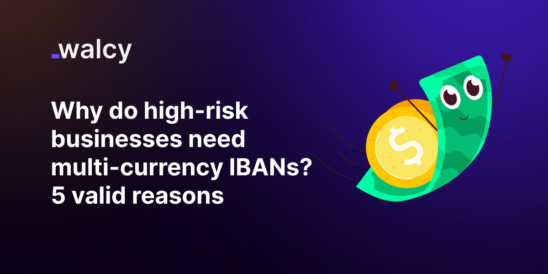Cross-border transactions form the backbone of international trade and finance in the global economy moving at a speed so fast. At the very heart of this challenge is the potency of settling these transactions in as quick, efficient, and secure a manner as possible.
A major risk in this process can be ascribed to foreign exchange settlement risk, better known as “Herstatt Risk.” In response, the Continuous Linked Settlement system was devised. This has provided a much safer and more efficient mechanism whereby financial institutions achieve the settlement of foreign exchange transactions.
At the core, CLS is the technical explanation of how cross-border payments are settled on a real-time gross basis, across a wide set of currencies and countries. This comprehensive guide will define what Continuous Linked Settlement entails, what benefits it offers, how it works, and what underpins this critical part of the global financial system.
What is Continuous Linked Settlement?
Continuous Linked Settlement, or CLS, is the financial service that offsets the risks of settlement in the foreign exchange market. By employing the CLS system, both sides of an FX transaction are settled at the same time, meaning payment will be made only on the condition that a counterpayment is received. Therefore, the risk of one of the parties defaulting after the other party has already received the money and subsequently facing huge financial loss is reduced.
CLS works through the linking of various currencies and their settlement systems across the globe in such a way that any leg of a currency trade will be settled at the same time. It is an international solution used by banks, financial institutions, and large corporations active in cross-border currency transactions.
Read about: All About Overseas Payments (2024); Comprehensive Guide
Key Components of Continuous Linked Settlement
The following are some of the key components and mechanisms that make CLS an integral part of the FX market. These include:
CLS Bank:
The CLS Bank plays a major role in providing settlement to FX trades through the CLS system. It serves as a financial intermediary between the two parties participating in exchanging the currency in question. The CLS Bank is tasked with ensuring that the payment is exchanged simultaneously to avoid any kind of risk that might relate to the non-receipt of funds.
Settle and Net:
More commonly known as Herstatt Risk, settlement risk occurs when the party to a transaction defaults after having received payment but before making his or her corresponding payment. The CLS system has very minimal exposure to this type of settlement risk since both legs of a transaction are settled under it simultaneously. This feature is quite important for cross-border transactions which span time zones and different banking systems.
Instant Settlement:
One of the major merits of CLS is instant settlement. All the foreign exchange trades settled via CLS are payment vs. payment, meaning both legs of the trade are settled simultaneously to reduce the risk of default. This allows for real-time transactions, cutting delays in the process of making payments; hence, it is an efficient process for all participants.
Continuous Net Settlement:
Continuous net settlement is the feature of CLS that efficiently uses the liquidity. Instead of settling an individual FX trade, participants of CLS can settle multiple trades simultaneously. CLS continuously calculates the net position of participants and settles those net amounts, therefore reducing the total amount of currency that needs to be exchanged. Thereby, this increases the efficiency of liquidity in the foreign exchange market much more.
Authorized Net Settlement Time :
Another critical functionality of CLS is the authorized net settlement time. This is the actual time when the settlement instructions from all participants get confirmed, with the net amounts thereof being calculated for purposes of settlement. The CLS system runs on a highly synchronized schedule whereby participants can submit their settlement instructions at a given time, thereby guaranteeing that the system operates with no delays.
CLS is an efficient means of payment and settlement, hence facilitating the settlement of funds in more than one currency. A model of payment-versus-payment is implemented to ensure the settlements occur simultaneously between different currencies; this is highly advantageous, as most companies and financial houses conduct international trade where multi-currency settlements are common.
Read about: Best Multicurrency Account: What Is It And How It Works?
How Continuous Linked Settlement Works?
CLS works in such a way that currency trades between two parties can be settled simultaneously. This is achieved as follows:
Trade Execution:
It begins when two parties enter into a deal in an FX trade. After the trade is agreed upon, each party informs their respective banks or financial institutions regarding the details of the transaction. This instructs each of them for its settlement to the CLS system.
Matching:
The settlement instructions of the two parties are fed to the CLS system, which matches the transaction details against each other to ensure that they tally. If the instructions match, the CLS system will continue to settle; if not, the transaction is flagged for review.
Funding:
Each counterpart shall ensure that they have adequate funds in their relevant currency accounts. The participants have to pre-fund accounts with CLS Bank for the required amounts of the trades they are settling. This stage is known as “pre-funding,” which ultimately means that the needed currencies to settle these transactions are pre-identified.
Payment Versus Payment (PvP) Settlement:
When the funds are available, the CLS system initiates a payment-versus-payment (PvP) settlement. The mechanism provided by PvP ensures that the two legs of an FX trade will be settled at the same time. If one party is selling U.S. dollars and buying euros, for example, CLS will ensure that dollars and euros are moved at the same moment in time, eliminating the possibility of one party failing to deliver after having received the money.
Settlement Finalization:
Once the PvP process is completed, the settlement is finalized and notification is sent to both parties that the transaction has taken place. Any settlement is now final, meaning irrevocable, and can no longer be reversed.
Benefits of Continuous Linked Settlement
Continuous Linked Settlement has various benefits for any financial institution, corporation, and other participants in the FX market. These are:
Reduced Settlement Risk:
The single most significant benefit of CLS is that it reduces settlement risk. By employing a payment-versus-payment system, CLS provides for simultaneous settlement of the two sides of a currency trade, thereby reducing the possibility of default by one party after receipt of payment.
Efficiency:
CLS increases efficiency in the settlement of cross-border currency trades by offering a continuous net settlement basis for their clients centrally throughout the day. Indeed, through the principle of continuous net settlement, participants have to settle less cash since many of their payments cancel each other out; therefore, the need for substantial cash reserves is greatly reduced.
Improved Management of Liquidity:
The CLS system will help participants improve their liquidity management by eliminating the need for them to have large amounts of capital reserves on deposit. Since CLS settles trades on a net basis, participants have to fund their net amounts only, thus releasing more liquidity for other business activities.
Transparant and Safe:
CLS provides a more ‘open and safer’ method to settle an FX trade. In the system, all transactions are recorded and followed in real-time. The participants in the trade can fully view their trade statuses. This transparency builds trust and reduces opportunities for fraud or errors.
Global Reach:
CLS settles a wide range of currencies, thus being an excellent tool for both businesses and financial institutions alike with global trade involvement. With international trade continuing to rise, the need for efficient, secure, and reliable settlement systems like CLS will further increase.
Challenges and Considerations
While CLS has many benefits, there are some challenges and considerations:
Complexity in Implementation:
Its implementation and integration into the existing financial infrastructures are highly complex activities, involving immense resources. The participants have to ensure that their systems are compatible with the CLS platform and that they possess processes for managing their transactions appropriately.
Regulatory Compliance:
The members of the CLS system follow various regulatory requirements in the jurisdictions where they operate. These vary from anti-money laundering (AML) to Knowing Your Customer, popularly referred to as KYC, among other financial reports.
Limited Currency Coverage:
While CLS covers a wide range of currencies, not all currencies are eligible for settlement through the CLS system. Those participants who are dealing with exotic or less liquidly traded currencies will have to seek other ways of settling these types of transactions.
Costs:
While there is a cost to utilizing the CLS system, such as transaction fees, and the cost of maintaining sufficient liquidity to fund trades, firms, and financial institutions should consider the benefits derived from the use of CLS about the costs for small transactions.
Read about: International Payment Fees | The Essential guide.
The Future of Continuous Linked Settlement
In this view, with the continuing increase in global trade and cross-border transactions, an effective and secure settlement system such as CLS will be in greater demand. Several trends are likely to feature in the future of CLS:
Greater scope of currency involvement:
With the constant expansion of the CLS system, it will start supporting a wider range of currencies, making it even more helpful for companies or financial institutions that deal with international trade. This expansion will enable more participants to enjoy the benefits of CLS, which will further reduce the settlement risk in the FX market.
Integration with Advanced Technologies:
It’s included that emerging technologies like blockchain, AI, and machine learning are expected to be involved in enhancements to make CLS more efficient and secure. For instance, blockchain technology can offer a way of tracking and settling transactions more transparently and securely, while AI could provide optimization in the processes of liquidity management and transaction matching.
Smarter Focus on Real-Time Settlements:
Due to the increased demand for real-time payments and settlements, CLS will most likely continue to evolve in ways that offer quicker and more streamlined settlement processes. Real-time FX settlement solutions may reduce settlement times significantly further and continue to reduce risks.
Conclusion
Continuous Linked Settlement has thus been integral to the global financial system, repaying foreign exchange transactions through a secure, efficient, and transparent platform. CLS reduces the risk of settlement and helps improve liquidity management; therefore, it is an important utility for companies, financial institutions, and other participants in the FX market.
Demand for systems such as CLS will continue to grow as long as the global economy is getting closer and cross-border transactions are on the rise. While there may be challenges and considerations to be taken care of, the benefits of CLS adoption far outweigh the risks, making it a must-tool for anyone involved in foreign exchange trading.
Do follow us on Facebook and LinkedIn, to stay connected with us.



